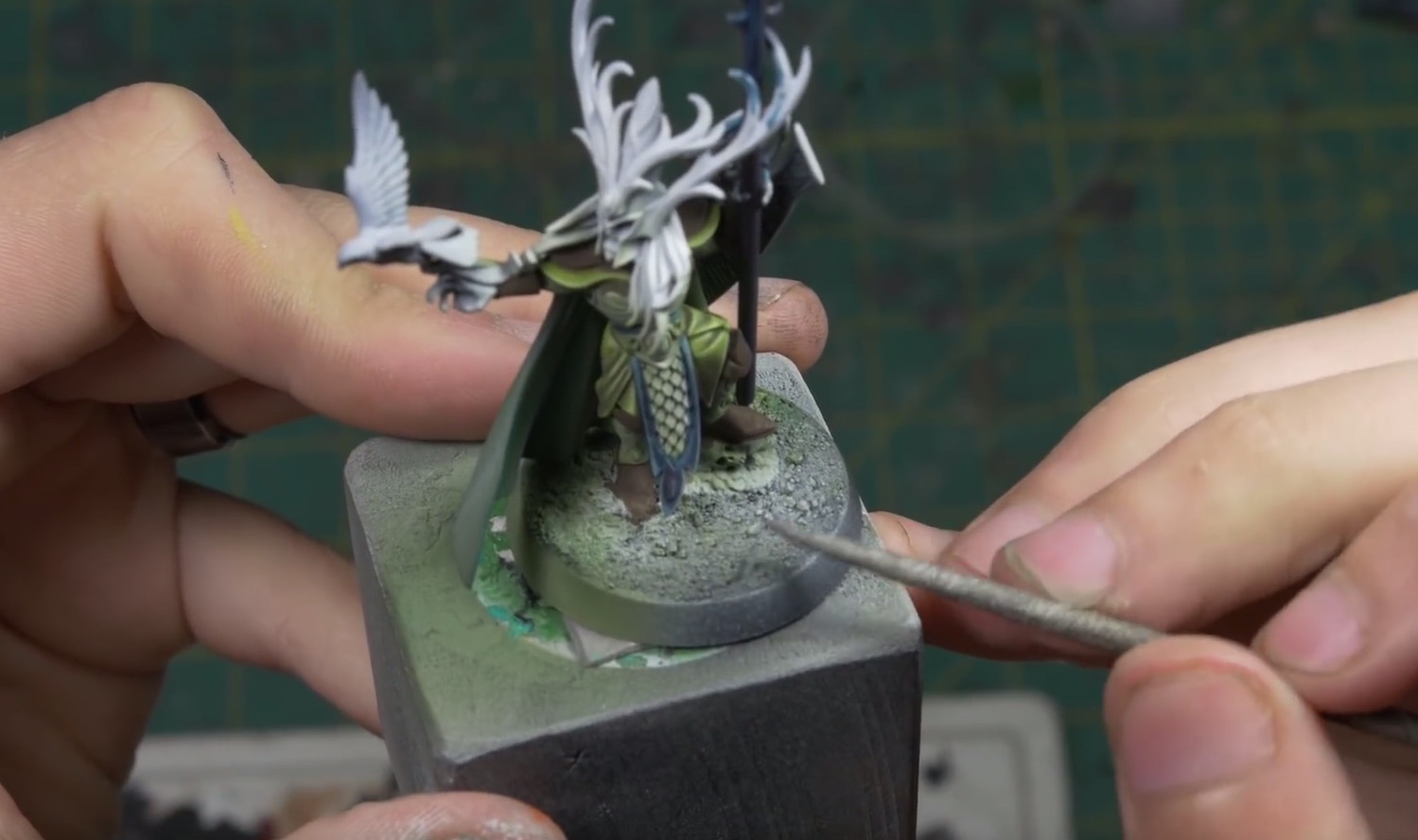Great advice for those getting started in miniature painting

I have been a tabletop/roleplaying gamer, off and on, for most of my life. Miniature modeling, painting, and terrain building have always been my favorite aspects of this wide-ranging and very maker-friendly hobby. As I've given in even more completely to my game-related obsessions these past few years (I may be in line for an intervention), painting minis has become my daily go-to activity for relaxation, creative expression, and escapism. I pretty much live for my painting and modeling sessions each night.
I'm really enjoying focusing on painting and trying to get as good at it as possible. I am currently painting up a bunch of Frostgrave wizard warbands, adversaries, and terrain, several teams for Gaslands (and suitably Mad Max-ian terrain), and the recent plastic OGRE miniatures.
After several years of nearly daily painting, I can now look back on my experience with some sense of what I did wrong. I was struck when I saw this video on Miniac because Scott touches on most of the key tips and cautions that I would share at this point.https://youtu.be/Xq2OtQxXTyk
Besides what he listed, I would add a few of my own.
You really only need one good brushThere is a trap that new or inexperienced painters fall into of thinking that they need a different size brush for each type of painting operation (e.g., a size 1 or 2 for base coating, a 0 for highlighting, a 00 - or ridiculous sizes like 5/0 or 18/0 - for painting eyeballs and super-detailing). You really only need one main brush (and a crappy old brush for dry brushing). I recommend getting a high-quality Kolinsky sable brush. I use the Winsor & Newton Series 7 Kolinsky Sable Watercolor Brush, in a size 1. Acrylic paint dries quickly so when you put a spot of paint on a 00 brush to paint an eyeball, by the time you line up your approach, the paint is already half dry. A size 1 watercolor brush is designed to hold a lot of paint. If you keep the tip on it nice and fine and pointy, you can do everything you can with a jarful of brushes of different sizes. And it will hold lots of paint. Besides learning good brush care (see below) and maintaining a righteous point, the key is learning how to use pressure and control to allow your size 1 brush to act as all of these different point sizes.
Use a good brush cleaner and conditionerGet yourself a pot of Masters Brush Cleaner and watch some videos on brush care. Treat your brush with reverence. Keep it clean, keep paint away from the ferule (the metal collar that holds the brush to the handle), and keep a point on the brush. After you've washed the brush well and rinsed it, coat the brush in some more Masters and twist the tip into a point. Store it flat while it dries (don't store a wet brush upright; water runs down into the ferule and degrades the connection to the handle).
Use agitator balls in your paint After I got some squeeze-bottle paints that had agitator balls in them, I wanted them in all of my paint bottles and pots. You can get 100 nail polish balls on Amazon for $6. Put one in each bottle or pot. You'll wonder how you ever went without these.
Use a matte medium thinnerThe quality of my painting took a giant leap forward when I started thinning the acrylic-based hobby paints I was using. Many painters just thin with water. But that makes it harder to apply consistently smooth, thin coats (one of the hallmarks of a great paint job). When you water-thin your paint, the pigment can separate from the medium and the water. To help keep your thinned paint integrated, you need a matte medium-based thinner. There are oodles of formulae out there, but basically all you need is to fill a bottle (e.g., 7ml eyedropper) with mostly distilled water and 5 or so drops of matte medium. Experiment until you find the amount of medium that keeps everything integrated while also keeping the paint nice and thin. Some people also add a few drops of Flow Aid. You can make that yourself, too: Mix about 6ml of distilled water with 5 or 6 drops of glycerine. You can also just add a modest drop of glycerin to your batch of acrylic thinner.